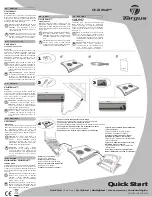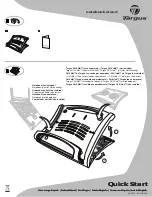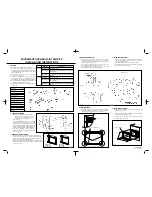
Joule 3.0 User Guide page 78
Chapter 14: Definition of Common Training Terms
Force
1. A vector quantity that produces an acceleration of a body in the direction of its application. 2.
To push. 3. The amount of pressure applied to the pedals or rear hub. 4. A measure of strength. 5.
Power divided by velocity.
Gross Mechanical Efficiency (GME)
1. The percentage of stored energy or food burned by the body that is converted to actual power
output. For an average person riding a bicycle the gross mechanical efficiency is equal to 22%.
Thus, for every 100 Kcals burned by an average person, only 22 Kcals is converted to actual power
at the pedals or rear hub. The rest is simply dissipated as heat or is used for other non-pedaling
functions. 2. In the past GME has been shown to be an important predictor of cycling perfor-
mance. Recent evidence, however, is controversial. Still, there are reports that the highest GME’s
found are in riders competing in grand tours like the Tour de France.
Hors Category Climb
1. A climb that is so difficult that it is beyond categorization. 2. Any climb longer and steeper than
a category 1 climb. 3. The most difficult climb in the Tour de France.
Horsepower
1. A measure of power where 1 horsepower is equal to 746 watts.
Intensity
1. The actual or perceived difficulty of a given workout, ride, or exercise bout. 2. The power output
or rate of energy expenditure. 3. How hard a workout, ride or exercise bout is. 4. The heat or tem-
perature. 5. The degree of difficulty. 6. Stress, when measured directly as the actual power output.
7. Strain, when measured as the response to a given power output (e.g., heart rate, perceived
exertion, oxygen consumption) 8. The percent of some reference maximal or sub-maximal value.







































